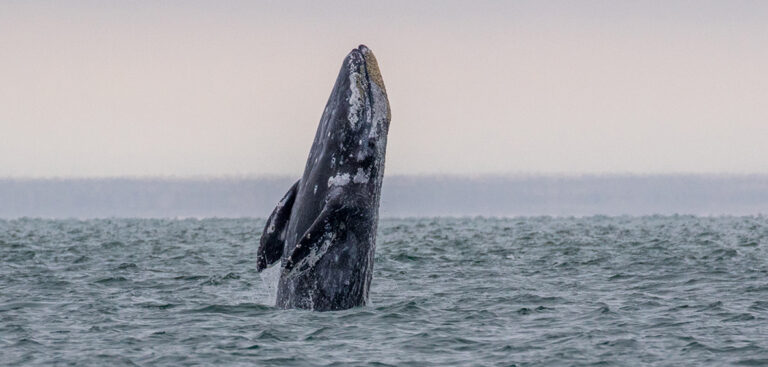Gray whales might depend on a magnetic sense to navigate their way in the ocean, according to researchers who have found that they are more likely to strand on days when there are more sunspots.
Sunspots are linked to solar storms, which have the potential to disrupt magnetic-orientation behavior when they interact with Earth’s magnetosphere.
Jesse Granger of Duke University, North Carolina, asked whether the solar storms were affecting the magnetic field, giving whales incorrect information or affecting the receptor, blinding the whales.
“I hypothesized that by looking at patterns in the spacing and timing of incidents where an animal was unable to navigate properly, we could better understand the sense as a whole,” she said.
Granger and her colleagues studied 186 live strandings of gray whales, and data showed the chance of stranding doubled on days with a high sunspot count than on randomly chosen days.
Further research showed that the risk of stranding was four times as high on days with a high solar radio flux index than randomly chosen days.
There was no significant increase in stranding on days with large deviations in the magnetic field, suggesting more sunspots disrupted the whales’ magnetoreceptive sensor rather than distorting the geomagnetic field itself.
Granger said, “When those results came up negative, I was flummoxed. It wasn’t until one of my co-authors mentioned that solar storms also produce high amounts of radio-frequency noise, and I remembered that radio-frequency noise can disrupt magnetic orientation, that things finally started to click together.”
Granger added that other factors such as mid-frequency naval sonar also causes whales to strand and Granger plans to analyze other species of whales to see if the pattern exists on a global scale.



